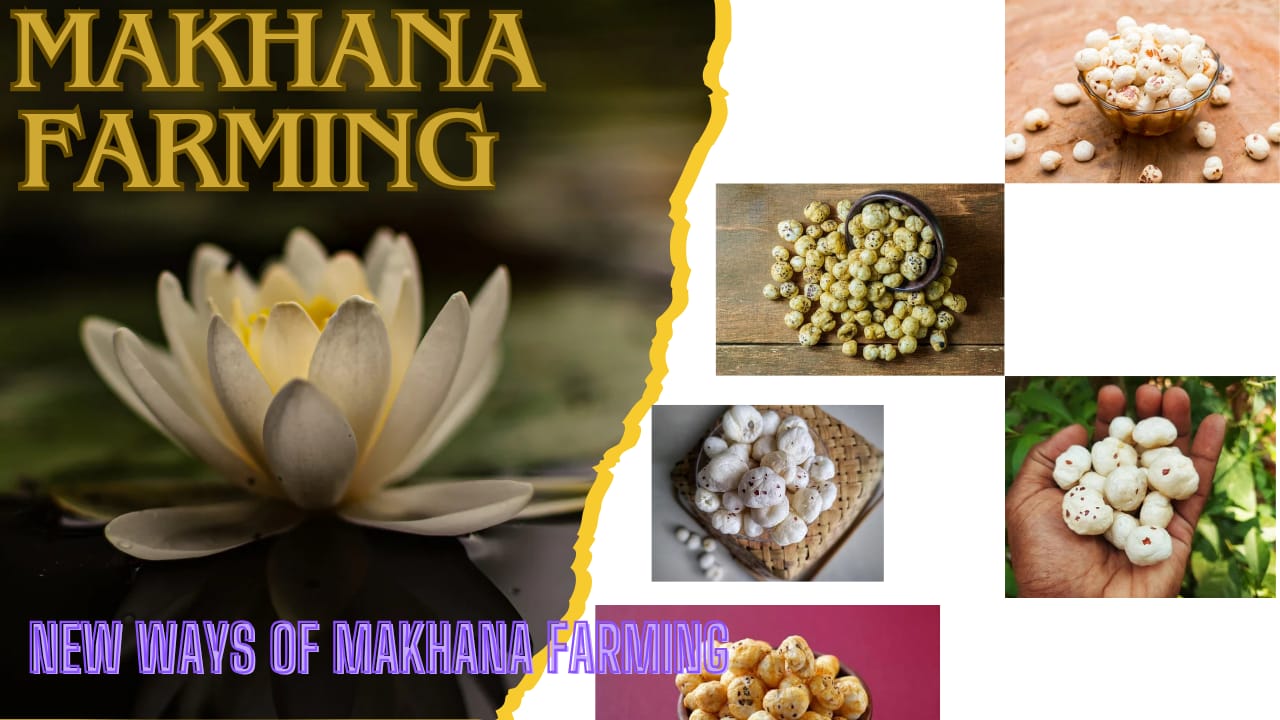MAKHANA FARMING IN 2025: The Next Big Agribusiness!
MAKHANA FARMING IN 2025
Makhana Production and Farming: A Profitable Agribusiness Opportunity
Makhana, also known as fox nuts or lotus seeds, Makhana farming in 2025 has gained immense popularity due to its nutritional benefits and growing demand in the market. Makhana farming in 2025 is emerging as a lucrative agribusiness, particularly in India, where Bihar is the largest producer. This blog explores the various aspects of makhana production, farming techniques, processing methods, and the economic potential of makhana cultivation.
What is Makhana Farming in 2025?
Makhana, derived from the Euryale ferox plant, is an aquatic crop that thrives in stagnant water bodies like ponds and wetlands. It is widely used in traditional Indian cuisine, snacks, and Ayurvedic medicine due to its rich protein, antioxidant, and mineral content. Makhana farming is labor-intensive but offers high returns, making it a sustainable agricultural practice.
Climate and Soil Requirements for Makhana Farming
Makhana cultivation requires specific climate and soil conditions to thrive. The following factors play a crucial role:
- Climate: Makhana grows well in subtropical and tropical regions with temperatures ranging from 20°C to 35°C.
- Soil: Loamy and clayey soils with high organic content and water retention capacity are ideal for makhana farming.
- Water Requirement: Makhana plants require stagnant or slow-moving water bodies such as ponds, wetlands, or lakes.
Makhana Cultivation Process
Makhana farming involves a series of well-defined steps, from seed collection to harvesting. Below are the key stages:
1. Selection of Seeds
High-quality makhana seeds are crucial for good yield. Farmers select mature, disease-free seeds from previous crops or reputable sources.
2. Pond Preparation
- Clean and desilt the pond to remove debris and improve water quality.
- Maintain a water depth of 1.5 to 2.5 feet for optimal plant growth.
- Apply organic manure to enhance soil fertility.
3. Sowing of Seeds
- The seeds are sown in the pre-monsoon season (March-April).
- Farmers broadcast the seeds uniformly in water bodies.
- The germination period lasts 8-10 days, during which proper water levels must be maintained.
4. Crop Management
- Weeding and Thinning: Regular removal of unwanted vegetation ensures better growth.
- Pest and Disease Control: Proper monitoring and organic pesticides help protect crops.
- Water Management: Maintaining an adequate water level is essential for proper makhana cultivation.
5. Harvesting and Processing
Makhana harvesting is labor-intensive and requires skill. The key steps include:
- Collection of Fruits: Fully matured seeds are collected manually using nets or traditional tools.
- Drying and Roasting: The seeds are sun-dried and then roasted at a high temperature.
- Puffing: The roasted seeds are popped by applying heat, giving them their characteristic crunchy texture.
- Grading and Packaging: Processed makhana is sorted based on size and quality before packaging for market distribution.
Economic Viability of Makhana Farming
Makhana cultivation is highly profitable due to the increasing demand in domestic and international markets. Some key economic factors include:
- High Market Demand: The growing awareness of health benefits has boosted the demand for organic makhana.
- Profit Margins: A well-managed makhana farm can yield 800-1000 kg per hectare, generating substantial income.
- Government Support: Various subsidies and schemes support farmers in adopting makhana farming.
- Export Potential: India exports makhana to countries like the USA, UAE, and the UK, making it a lucrative export commodity.
Health Benefits of Makhana
Makhana is a superfood with multiple health benefits, making it popular among fitness enthusiasts. Some key benefits include:
- Rich in Protein and Fiber: Helps in weight management and muscle growth.
- Low in Calories: Ideal for a healthy snack option.
- Antioxidant Properties: Helps in reducing inflammation and aging effects.
- Good for Diabetics: Regulates blood sugar levels effectively.
- Boosts Heart Health: Maintains cholesterol levels and improves cardiovascular function.
Challenges in Makhana Production
Despite its profitability, makhana cultivation faces several challenges:
- Labor-Intensive Process: Harvesting and processing require skilled labor.
- Climate Sensitivity: Changes in weather conditions can impact production.
- Limited Awareness: Many farmers lack knowledge about modern makhana farming techniques.
- Post-Harvest Losses: Improper storage and handling can reduce quality and profitability.
Future of Makhana Farming
The future of makhana production looks promising due to its rising demand and growing consumer preference for healthy snacks. Government initiatives and technological advancements in makhana processing are expected to further boost production efficiency.
Conclusion
Makhana farming is a sustainable and profitable agribusiness with immense potential. By adopting modern cultivation techniques, efficient processing methods, and exploring export opportunities, farmers can maximize their profits. With increasing consumer demand for organic and healthy food products, makhana farming is set to become a game-changer in the agricultural sector.




